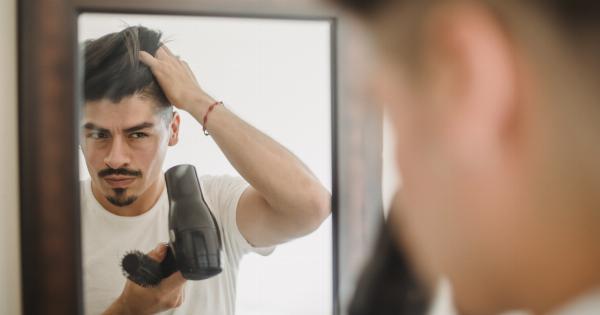Hair loss is a common condition that affects millions of people worldwide. It can have a significant impact on a person’s self-esteem and overall well-being.
While some degree of hair loss is considered normal, excessive hair loss can be a cause for concern. In this article, we will explore the topic of hair loss, its causes, and the available treatment options.
Understanding Hair Loss
Hair loss, also known as alopecia, refers to the partial or complete loss of hair from areas where hair would normally grow. It can occur on the scalp, face, or body and can affect both men and women of all ages.
There are several types of hair loss, each with its own causes and characteristics. The most common type is androgenetic alopecia, also known as male or female pattern baldness.
This type of hair loss is hereditary and typically occurs as a gradual thinning of the hair.
Alopecia areata is another common type of hair loss, characterized by the sudden and patchy loss of hair. This condition is believed to be an autoimmune disorder in which the body’s immune system mistakenly attacks the hair follicles.
Causes of Hair Loss
There are numerous factors that can contribute to hair loss. Some of the most common causes include:.
1. Genetic Predisposition
Heredity plays a significant role in hair loss. If individuals have a family history of baldness or thinning hair, they are more likely to experience hair loss themselves. This is especially true for androgenetic alopecia.
2. Hormonal Changes
Hormonal changes can also contribute to hair loss. For example, during pregnancy, women may experience temporary hair loss due to hormonal fluctuations. Similarly, hormonal imbalances, such as those caused by thyroid disorders, can lead to hair loss.
3. Medical Conditions
Certain medical conditions can cause hair loss. For instance, scalp infections like ringworm can result in patchy hair loss.
Additionally, conditions like alopecia areata and trichotillomania (hair pulling disorder) can contribute to significant hair loss.
4. Medications and Treatments
Some medications and treatments can have hair loss as a side effect. Chemotherapy, for example, is well-known for causing hair loss, including eyebrows and eyelashes.
Other drugs, such as those used to treat depression, high blood pressure, and cancer, can also contribute to hair loss.
5. Stress and Trauma
Emotional or physical stress can trigger hair loss. This can include severe emotional distress, physical trauma, or significant weight loss.
The hair loss experienced due to stress is usually temporary and the hair tends to grow back once the stress has been resolved.
6. Poor Nutrition
A diet lacking in essential nutrients, such as vitamins and minerals, can lead to hair loss. Adequate protein intake is particularly important for healthy hair growth.
A deficiency in nutrients like iron, zinc, and vitamin D can also contribute to hair loss.
Treatment Options for Hair Loss
The treatment options for hair loss depend on the underlying cause. Some common treatment options include:.
1. Medications
Medications such as minoxidil and finasteride are commonly used to treat hair loss. Minoxidil is a topical solution that can slow down hair loss and promote hair regrowth. Finasteride is an oral medication that can help prevent further hair loss in men.
2. Hair Transplant Surgery
Hair transplant surgery involves removing hair follicles from one part of the body (often the back or sides of the scalp) and transplanting them into areas with thinning or no hair. This surgical procedure provides a long-term solution for hair loss.
3. Laser Therapy
Laser therapy is a non-invasive treatment option that uses low-level laser light to stimulate hair growth. This therapy is typically performed in a clinic setting and involves several sessions over a period of time.
4. Scalp Micropigmentation
Scalp micropigmentation is a technique that involves tattooing tiny dots or lines on the scalp to mimic the appearance of hair follicles. This procedure can create the illusion of a shaved head or add density to areas with thinning hair.
5. Wigs and Hairpieces
Wigs and hairpieces are non-surgical options for individuals experiencing significant hair loss. They can provide a natural-looking solution while allowing the person to style their hair as desired.
6. Lifestyle Changes
Adopting healthy lifestyle habits can also help improve hair health and reduce hair loss. This includes eating a balanced diet, managing stress levels, avoiding excessive heat or chemical treatments, and practicing good hair hygiene.
Conclusion
Hair loss is a common and often distressing condition that can have a significant impact on a person’s self-esteem. It can be caused by various factors, including genetics, hormonal changes, medical conditions, medications, and stress.
Luckily, there are several treatment options available to help combat hair loss and promote regrowth. It is important to consult with a healthcare professional or dermatologist to determine the underlying cause of hair loss and develop an appropriate treatment plan.






















